Are you going to wear those flashy, expensive sari and jewelry? Most people these days can’t even afford a single meal—do you want to show off how rich you are? Don’t wear them please, wear something simple and ordinary so that you can identify yourself with the poor people of this land.
— Sheikh Mujib speaking to his daughter
Prime Minister Sheikh Hasina, in her article “Striving to Realize the Ideals of My Father,” published in the US-based MIT Press Direct, reflects on her father’s, Bangabandhu Sheikh Mujibur Rahman, ideals and her efforts to actualize them. She emphasizes how she learned from her father to empathize with the deprived and disadvantaged and to dream of building a prosperous future for them. This article provides a glimpse into her personal and political journey, deeply influenced by her father’s vision for Bangladesh.
Embodying Her Father’s Ideals
Sheikh Hasina’s article vividly portrays her father’s dream of creating a prosperous and democratic Bangladesh, which has become the guiding force of her life and political philosophy. She shares her father’s vision of a “Sonar Bangla,” a Golden Bengal, based on the principles of democracy, religious tolerance, and social justice. This vision has been the driving force behind her relentless efforts to follow in her father’s footsteps and work towards the betterment of the country and its people.
Learning from Her Father
The Prime Minister recounts her father’s advice, illustrating his humility and concern for the less fortunate. She recalls his words urging her to identify with the poor by choosing simplicity over opulence. This anecdote reflects the values and empathy instilled in her by her father, shaping her approach to governance and leadership.
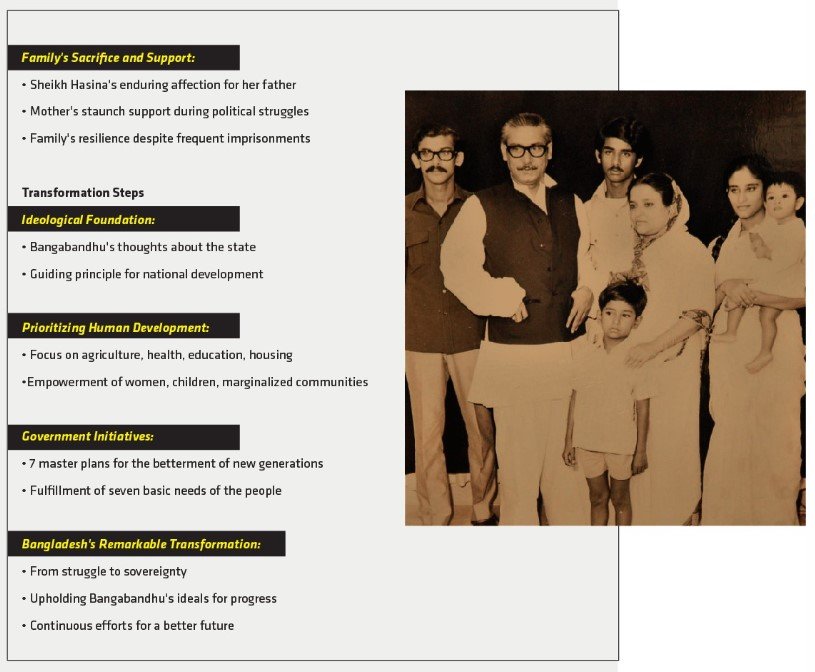
|
Legacy of Sacrifice and Resilience
Sheikh Hasina also reflects on the sacrifices and enduring affection of her father, who was frequently imprisoned during the struggle for independence. Despite his absences, his unwavering commitment to the nation and his enduring affection deeply influenced her and her siblings. She acknowledges the pivotal role of her mother, who wholeheartedly supported her father and ensured their children received a proper education, reinforcing the family’s commitment to the nation’s welfare and development.
Building on Her Father’s Legacy
The article also highlights Sheikh Hasina’s government’s efforts to address the basic needs of the people, foster economic growth, and achieve significant milestones in various sectors, including agriculture, food security, healthcare, education, and infrastructure development. She emphasizes Bangladesh’s remarkable progress, citing its economic growth, self-sufficiency in food production, and advancements in various industries, including the garment sector and remittance earnings.
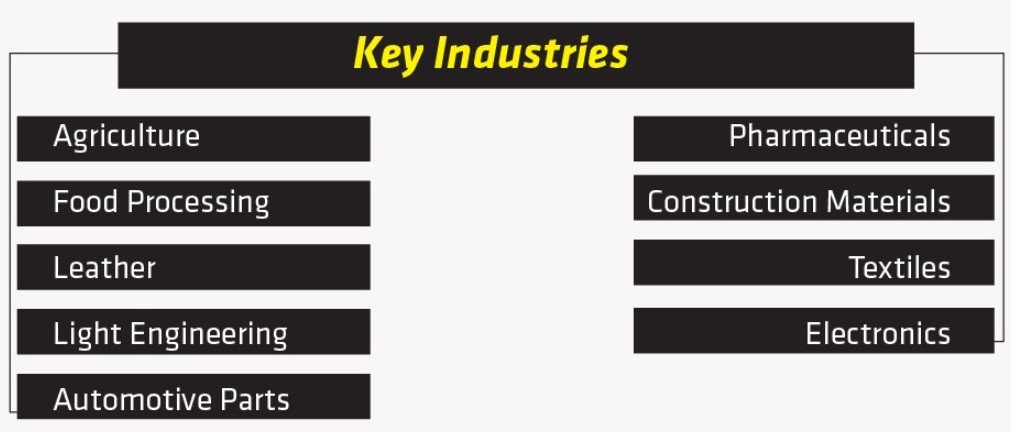
Different Dimensions of the Book
Conflict Resolution
Almost immediately after starting her first term in 1997, Sheikh Hasina and her government negotiated and signed a historic peace agreement with the indigenous population in the Chittagong Hill Tracts area, putting an end to the long-running conflict there. This agreement, which ended a long-festering armed insurgency in the eastern region of the country, recognized the rights of the local people and ethnic tribes. It also established a regional development council to promote greater prosperity in a region that had been held back. As a result, all modern facilities have reached the people of remote hill tracts.
Water Supply
In the article, the premier said, the Awami League government successfully negotiated the Indo-Bangladesh agreement regarding the sharing of water from the Ganges River. This agreement ensured a steady flow of water during the dry season, significantly enhancing agricultural productivity in the southwestern region of the country. Currently, 72% of our cultivable land is under irrigation, facilitating our ascent to the position of the world’s second-largest rice producer and third-largest vegetable producer, as previously mentioned.
Furthermore, the government launched various initiatives to guarantee access to clean water, sanitary facilities, and overall household hygiene. Currently, 98.5% of our population has access to safe drinking water, with 85.7% utilizing tube wells/boreholes and 11.7% relying on piped water. However, a significant area requiring improvement in our nation is the provision of piped water in urban areas, which remains low at a mere 38.1%.
Development of Communication System
In the article, the premier mentioned that the Awami League government has made significant progress in developing physical infrastructure in Bangladesh. The completion of the 5.8-kilometer Jamuna Bridge in the first term of the government connected the northern and western regions of Bangladesh with the relatively more developed eastern region, facilitating enhanced agricultural development in the northern districts. The government is actively addressing road infrastructure deficiencies by planning the development of four-lane highways across the nation. In the second term of the government, various pending projects were initiated, including the construction of a new multimodal bridge over the Padma River, which promises to catalyze a significant economic transformation in the southern region. These projects are slated for completion by 2025, heralding a new era of connectivity and development.
Digitization and Modern Technologies
The premier said that Bangladesh has made significant progress in digitalization, with the initiation of the Digital Bangladesh project in 2009. The project aims to leverage mobile phone availability to promote e-governance, a tech-driven economy, and an ICT sector. The first phase of the project, set for completion by 2021, surpassed expectations, with over 5,000 digital centers offering diverse services and creating job opportunities. The government has established over 8,000 Sheikh Russel digital labs for children, agricultural data centers, and ICT parks nationwide, benefiting remote areas through initiatives like the Bangabandhu-1 satellite. Bangladesh’s digital exports have soared to $1.3 billion, with over 650,000 freelancers earning $500 million annually, a figure set to increase to $5 billion by 2025. Amid the COVID-19 pandemic, Bangladesh demonstrated resilience by digitizing state activities and doubling e-commerce activities to $100 million.
Electricity Supply
The Prime Minister has consistently emphasized the importance of energy as a fundamental driver of economic development. Consequently, beginning with the implementation of the Private Power Generation Policy in 1996 and the initiation of power generation privatization efforts that same year, Bangladesh has witnessed significant advancements in both energy generation and source diversification.
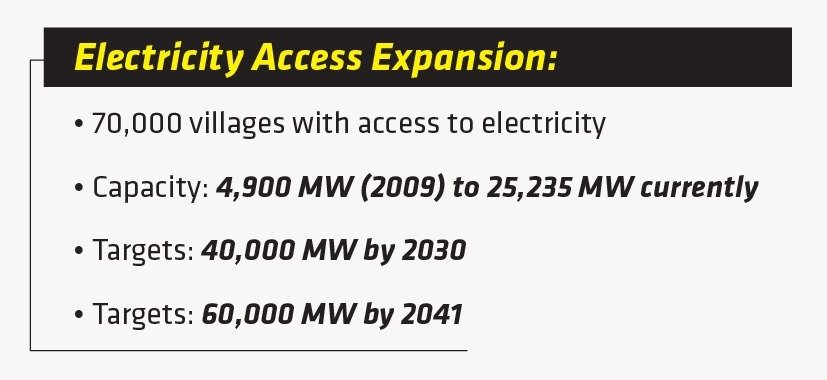
The government has set ambitious targets for power generation capacity, aiming to achieve 40,000 MW by 2030 and 60,000 MW by 2041. These targets are part of the country’s efforts to cover 40% of its power generation with clean energy by 2041, including 10% from renewable sources. Bangladesh has also focused on regional cooperation to facilitate the exchange of power, addressing electricity shortages and significantly expanding access to electricity.
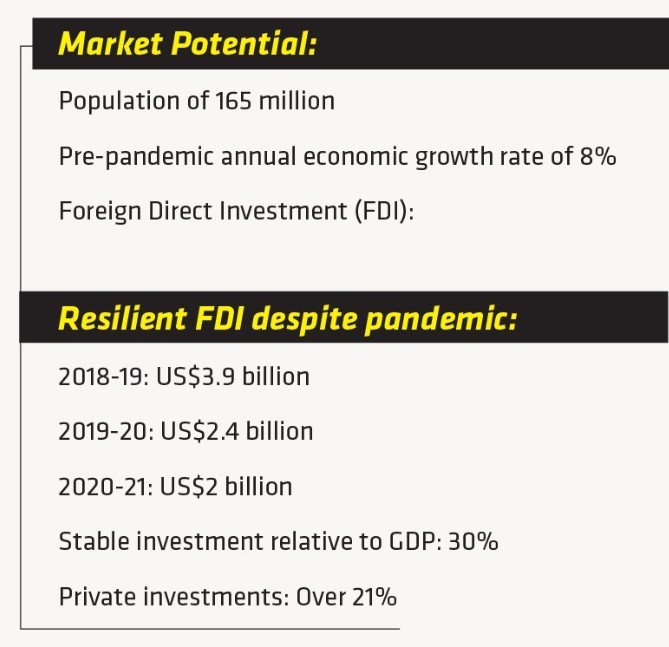
Foreign Investment, Industrialization, and Job Creation
Bangladesh presents lucrative investment opportunities across various sectors, as recognized by Prime Minister Sheikh Hasina. Industries such as agriculture, food processing, leather, light engineering, automotive parts, pharmaceuticals, construction materials, textiles, and electronics stand poised to yield substantial returns. With a population of 165 million and an economy growing at an annual rate of 8% pre-pandemic, domestic demand in these sectors is significant.
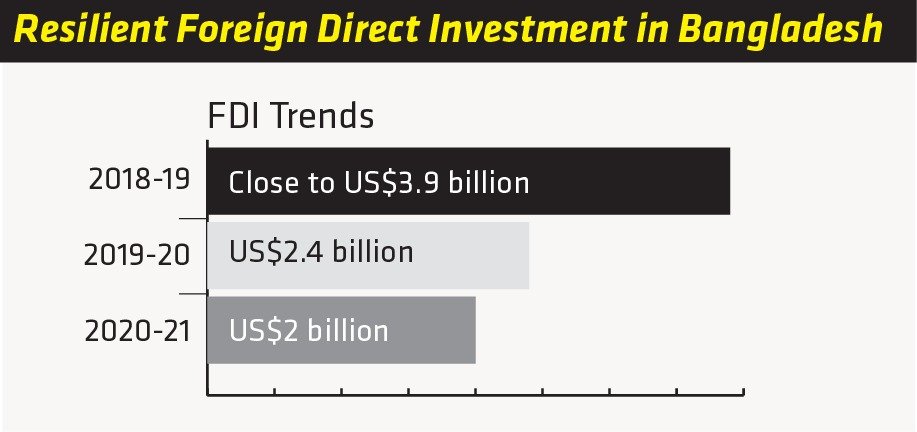
Despite a temporary decline due to the pandemic, foreign direct investment (FDI) in Bangladesh has shown resilience, with FDI reaching close to US$3.9 billion in 2018-19, followed by US$2.4 billion in 2019-20 and US$2 billion in 2020-21. Investments relative to GDP, both public and private, have remained stable at 30%, with private investments accounting for over 21%, indicating sustained confidence in the economy among local and foreign investors.
To further attract FDI and promote industrial growth, the government has established special economic zones (SEZs) and industrial estates, totaling 88, with plans to add five more by 2030.
Natural Environment
One of the most significant long-term challenges confronting Bangladesh is climate change, characterized by rising temperatures and sea levels. With the world’s largest delta, much of our coastal region faces the imminent threat of inundation. This issue extends beyond national boundaries and demands collective action from wealthier nations to curb carbon emissions and adhere to the targets outlined in the Paris Agreement.
Conclusion
Sheikh Hasina’s article not only reflects on the past and present but also looks to the future. She underscores the transformative journey of Bangladesh and the collective efforts that have propelled the nation forward. She expresses her father’s indomitable spirit as the driving force behind the nation’s progress and emphasizes the ongoing commitment to realizing his dreams for a prosperous and developed Bangladesh.


